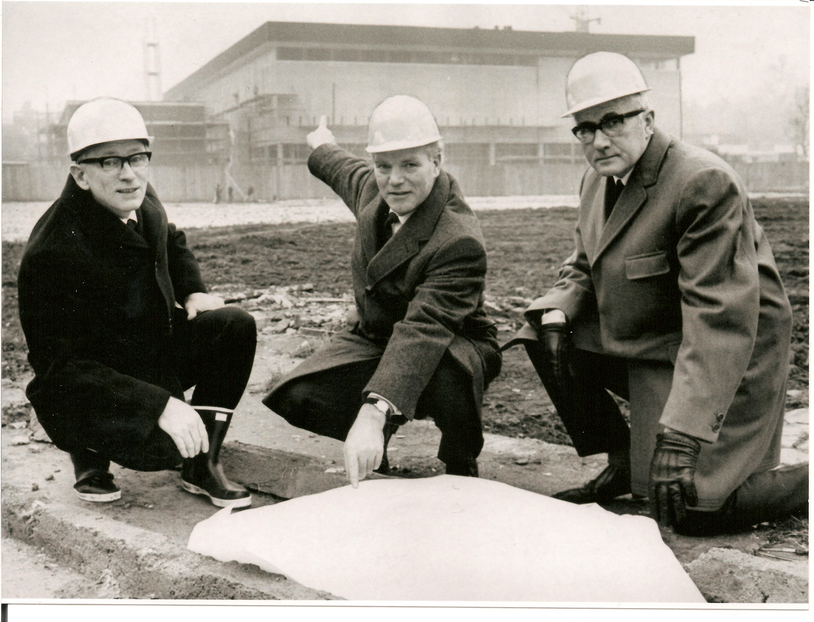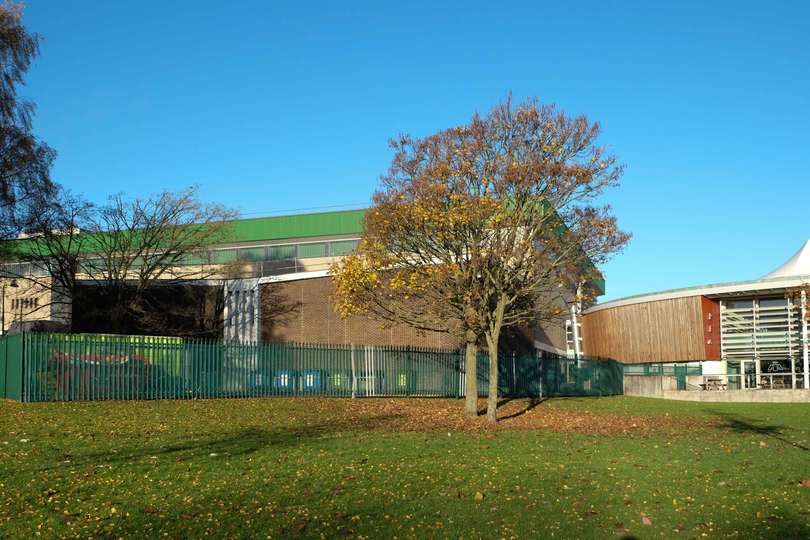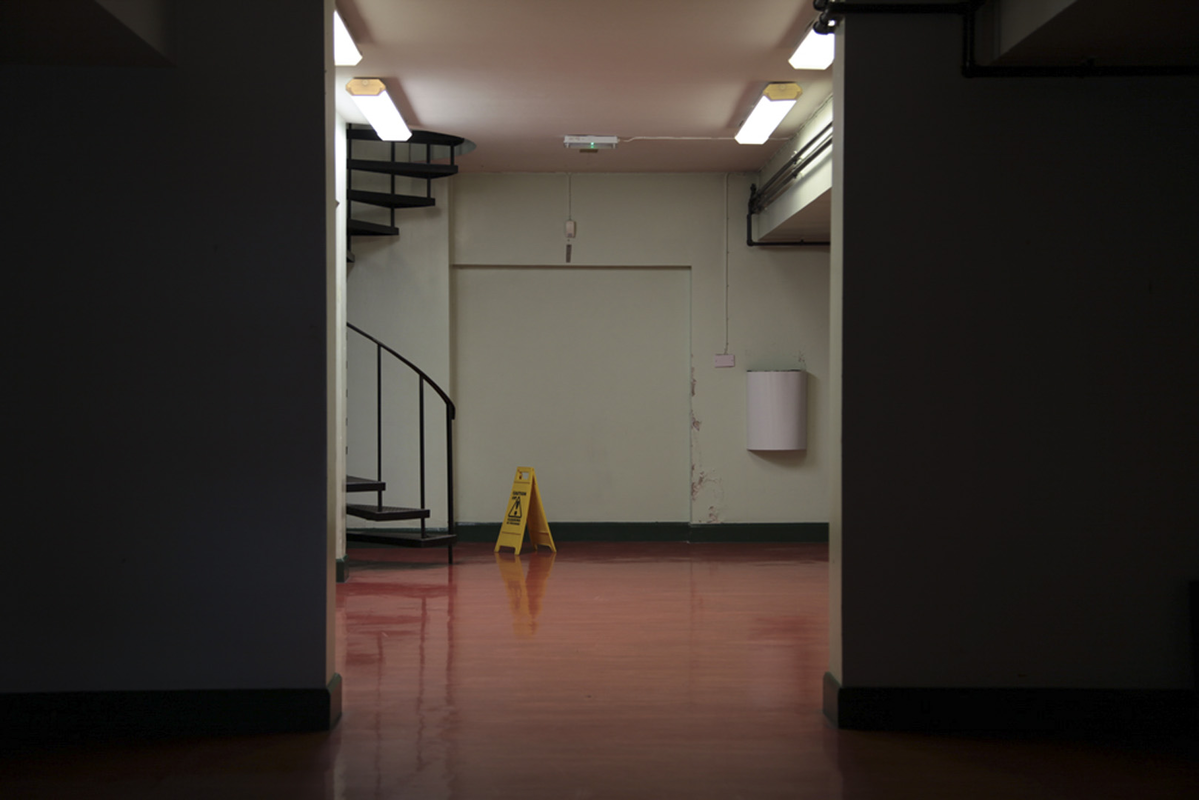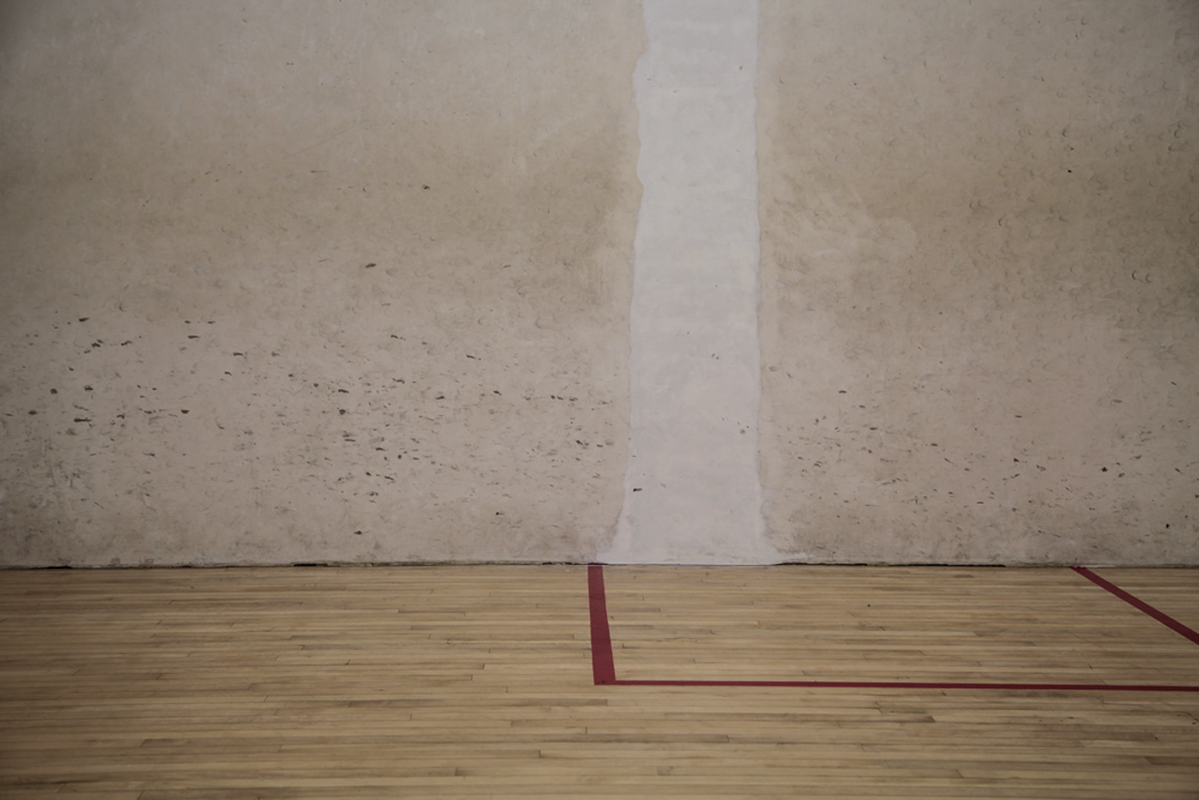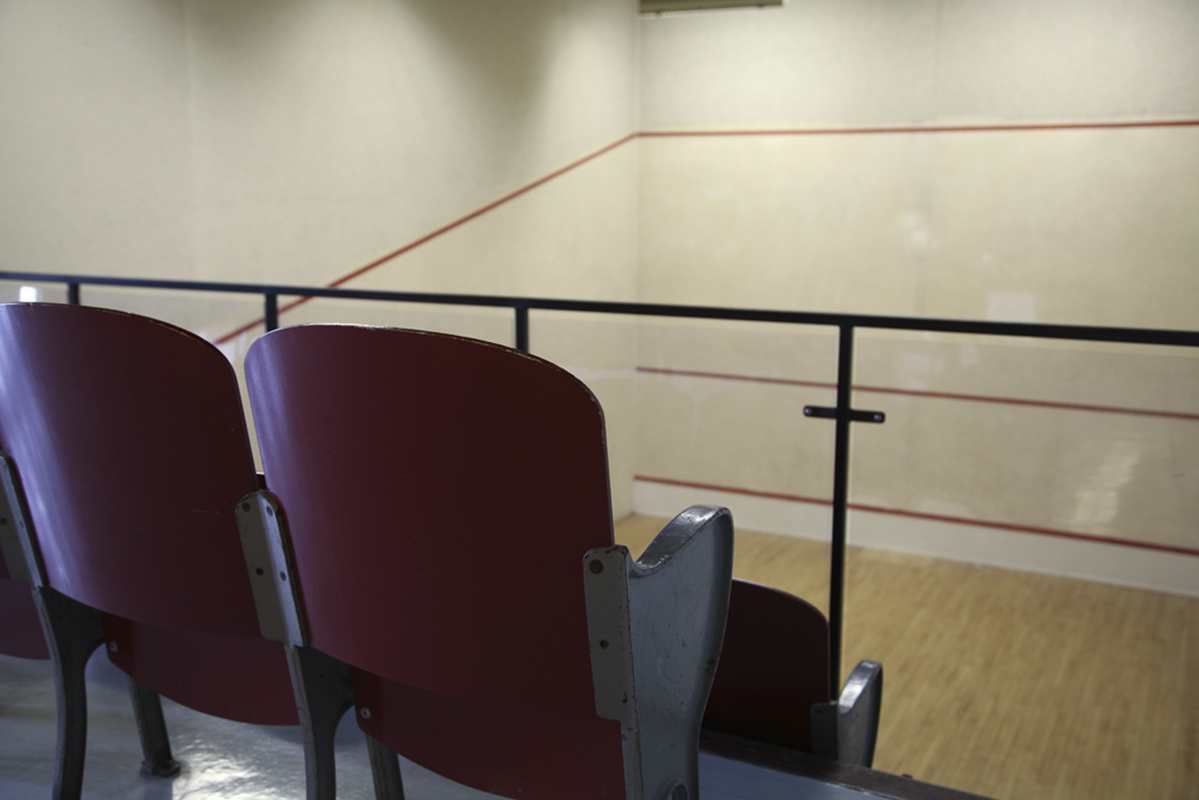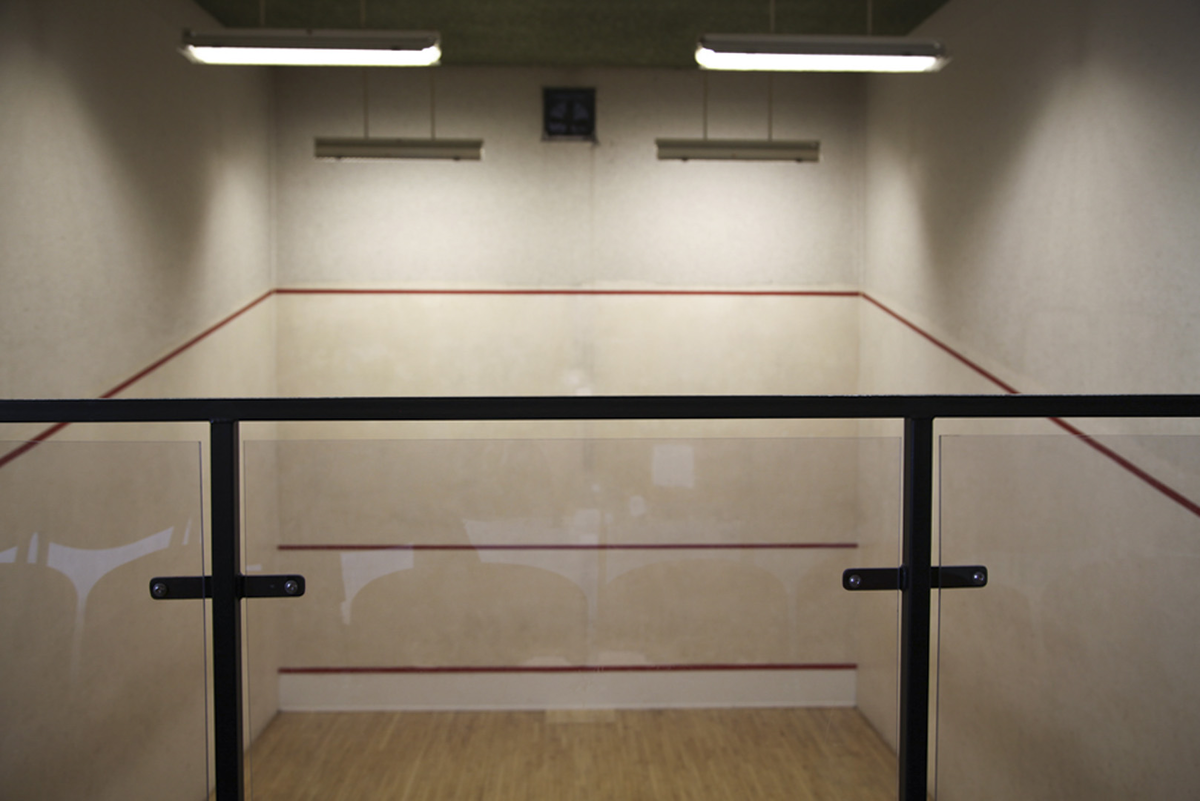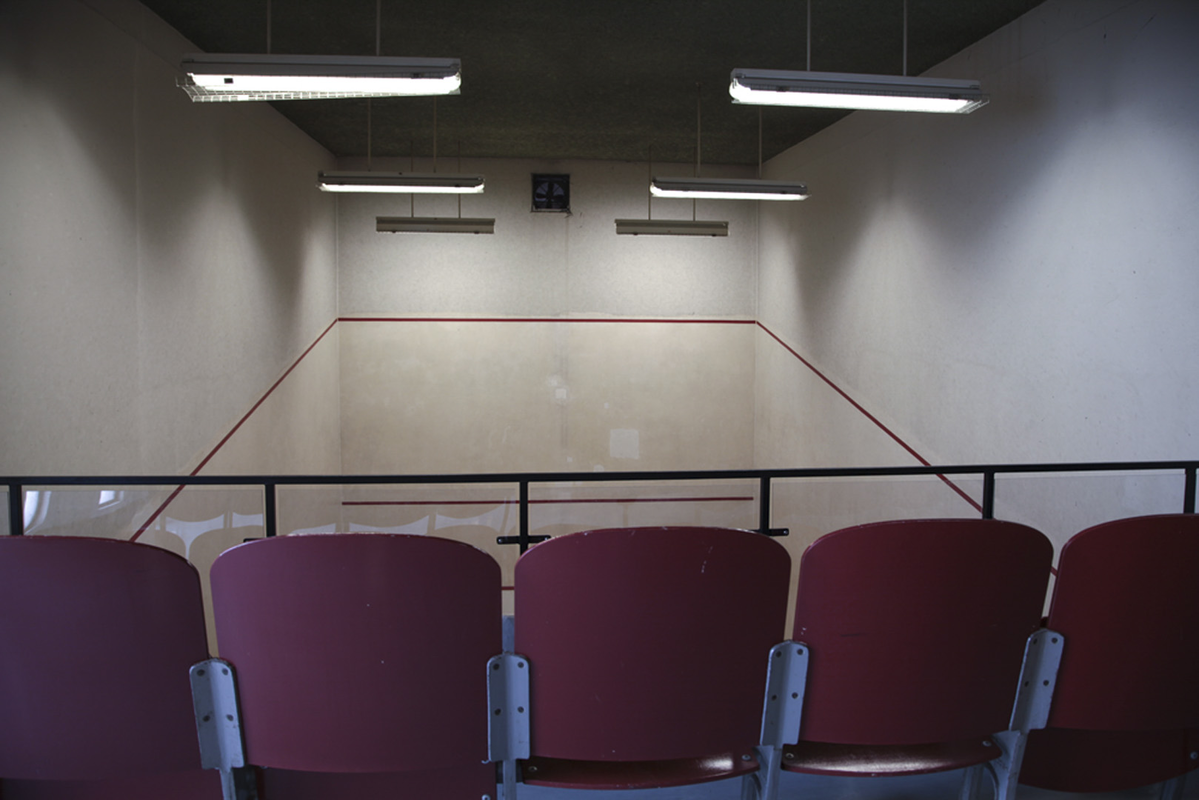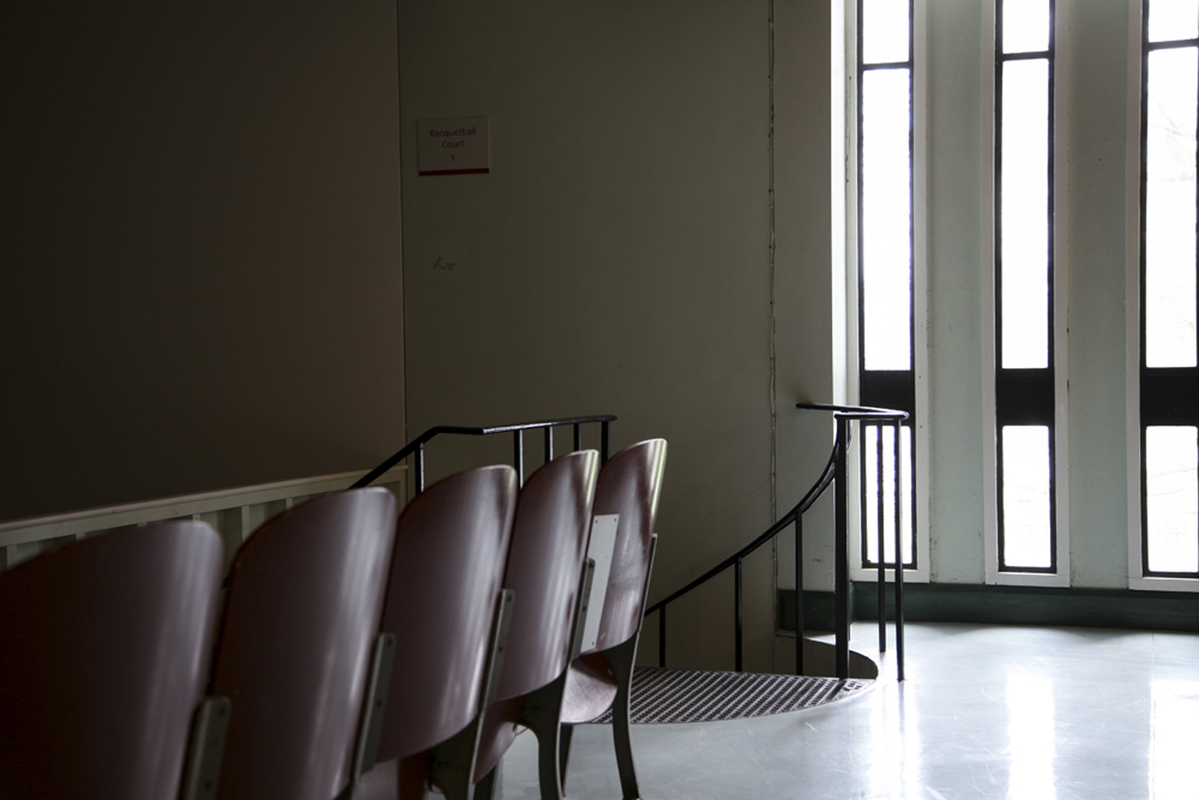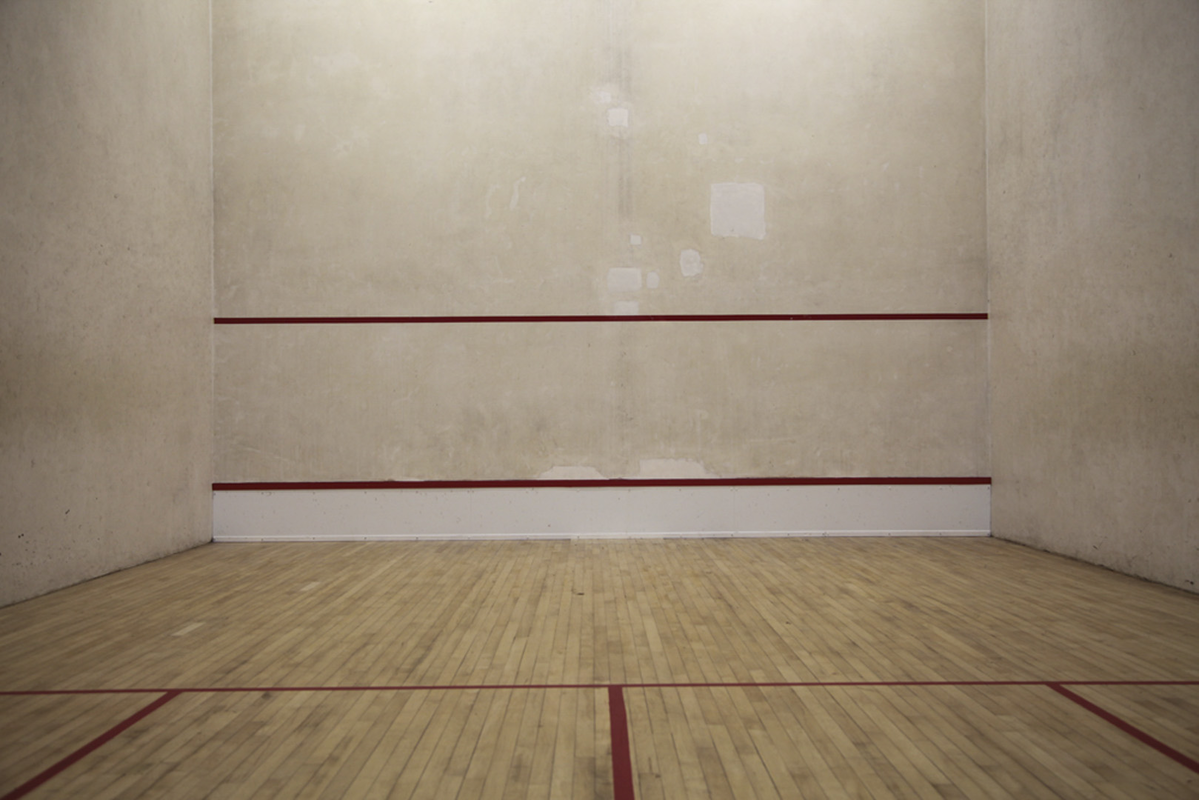After the exhibition, the building was bought by Queen’s University and converted to a sports facility.
The PEC building was the starting point to create an immersive acoustic experience, where a game of squash was used to explore ideas about architecture and place through sound. The squash courts were subject to acoustic processes extrapolated from two of Alvin Lucier's most important works: Vespers and I am sitting in a room. The floor markings were also manipulated, as a reference to Edward Krasinski's obsession with a never-ending line. These markings and acoustic processes extended beyond the performance space to reveal unexpected connections: — between the inside and the outside of the building, the particular event and everyday life, and between the history of the place, its remote life, with the present experience of the audience.
Architecture is inseparable from sound. Through resonance and reverberation, sound interacts with buildings, contributing to the creation of their specific atmosphere. Sound creates, in the present, the qualities that influence our perception of a space, and configures the image (the memory) we keep of it.
PLAY reconfigured an everyday space as a musical venue while reflecting on its history and identity. It incorporated its aural architecture and its surrounding soundscape to create a truly site-specific work, in the sense that it is both about the site and experienced on-site.
Our performance strategies temporarily transformed the building and its surroundings into a space for an extended musical experience. We attempted to go beyond the concepts of rules, territory, and division by collaboratively sounding out the building through the use of game strategies.
PLAY was a site-specific project created for the squash annex of the Physical Education Centre (PEC) at Queen’s University Belfast, and was presented as a 45 minutes performance at the Belfast Festival, on the 24 and 25 of October 2014.
The building is a noteworthy piece of architecture, not only for its design and its link to the socio-political history of conflict in Belfast, but also for its overwhelming acoustics.
Architecture is unstable, mutable, organic: its physicality, usage, and meaning are subject to change over time. PLAY sought to accentuate and reveal these processes. It set out to explore the present condition of this site through a combination of different operations on space, in which the audience is offered multiple perspectives.
PLAY could not ignore the history of the PEC, and Belfast’s divided socio-political history, which, to some extent, still overshadows the city. [1]
Although today the PEC is used as a sports facility, it was originally built to host ‘Ulster ’71’, an exhibition highlighting arts and culture in Northern Ireland. In 1971, traditional industries were declining in Northern Ireland and the sectarian conflict, in the form of the Troubles, was dominating Belfast. Ulster ’71 was part of the British government’s effort to ease the tensions felt in the region at the time.
In its original programme, Ulster ’71 was described ‘as [o]ne of the most ambitious programmes of cultural, sporting and social events ever staged in Northern Ireland’. [2] Whether Ulster ’71 was successful in its attempts to ease the conflict is beyond the scope of this presentation (see McIntosh 2005 for a discussion). Nevertheless, PLAY considered this ambivalent situation proposed at the time: sports as a peaceful means of competitive encounter? Can a game reframe an opposition?
